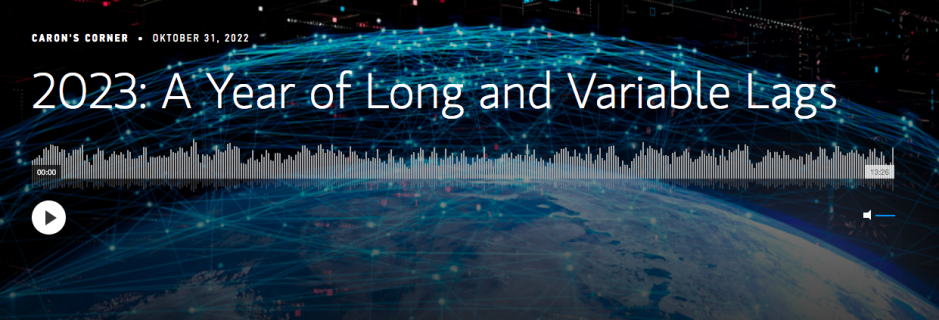
Morgan Stanley IM: 2023 - A Year of Long and Variable Lags
Morgan Stanley IM: 2023 - A Year of Long and Variable Lags
Fixed Income
Jim Caron, Senior Advisor for the Fixed Income Team, shares his macro thematic views on key market drivers.
04.11.2022 | 08:41 Uhr
- It is timely to connect the November Fed meeting with an outlook for 2023, as that meeting may mark the end of aggressive 75 basis point (bps) hikes, where the pace may slow to 50 bps in December and 25 bps thereafter.
- A terminal Fed funds rate of 4.75 - 5.25% may be reached in 1Q 2023, dependent on inflation data. Nevertheless, the end is near.
- This is important because interest rates hikes have been the key driver of asset prices in 2022, and changes in policy likely will have a strong influence on asset prices in 2023.
- But it is important to understand that rate hikes will influence the path of earnings, default risks and credit spreads, and ultimately the type of recession we get, whether deep (earnings) or wide (spreads).
- Why? Because as the Fed has said, rate hikes work with "long and variable lags" making 2023 “The Year of Long and Variable Lags.”
See below for important disclosures.





Diesen Beitrag teilen: